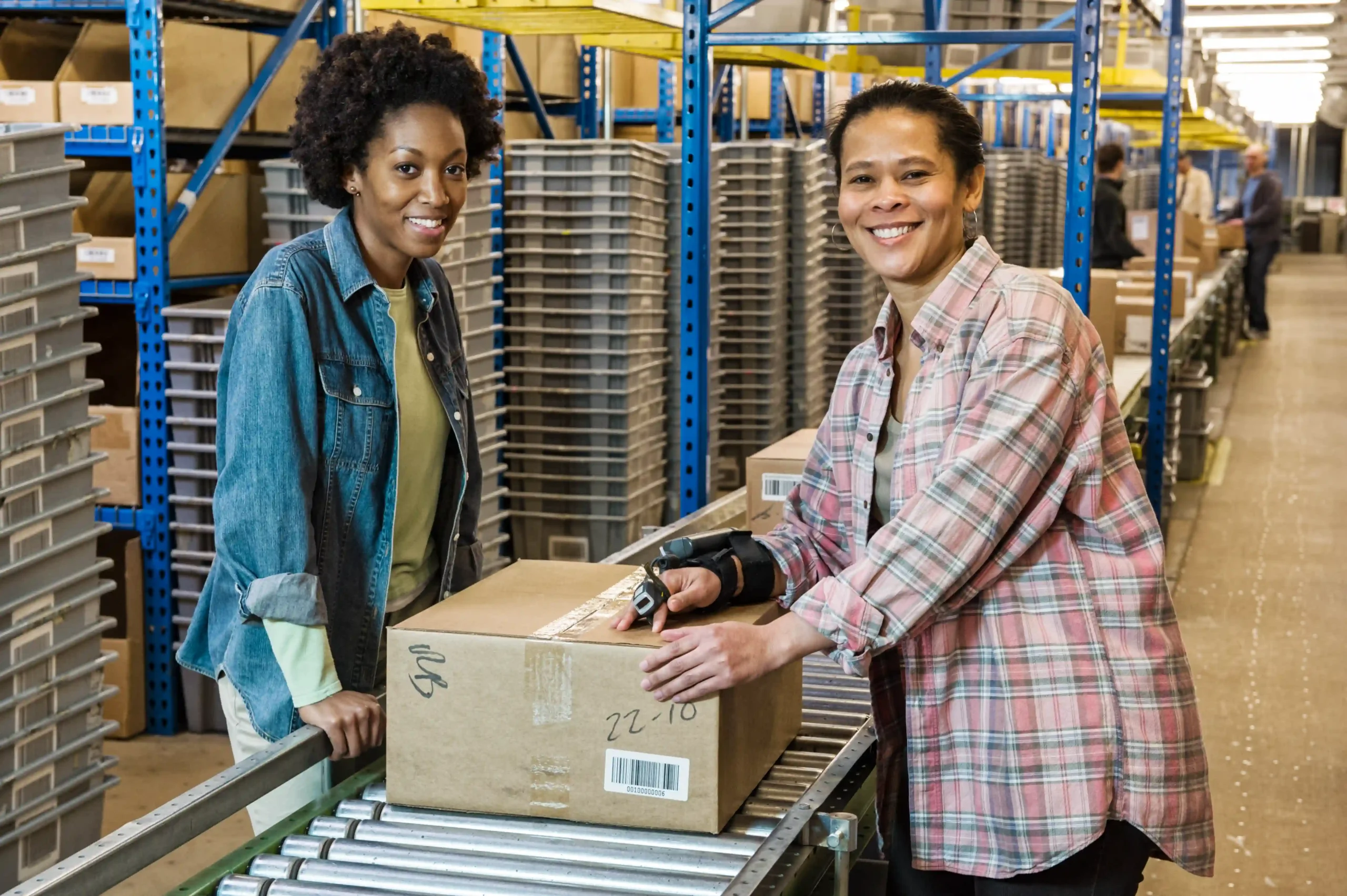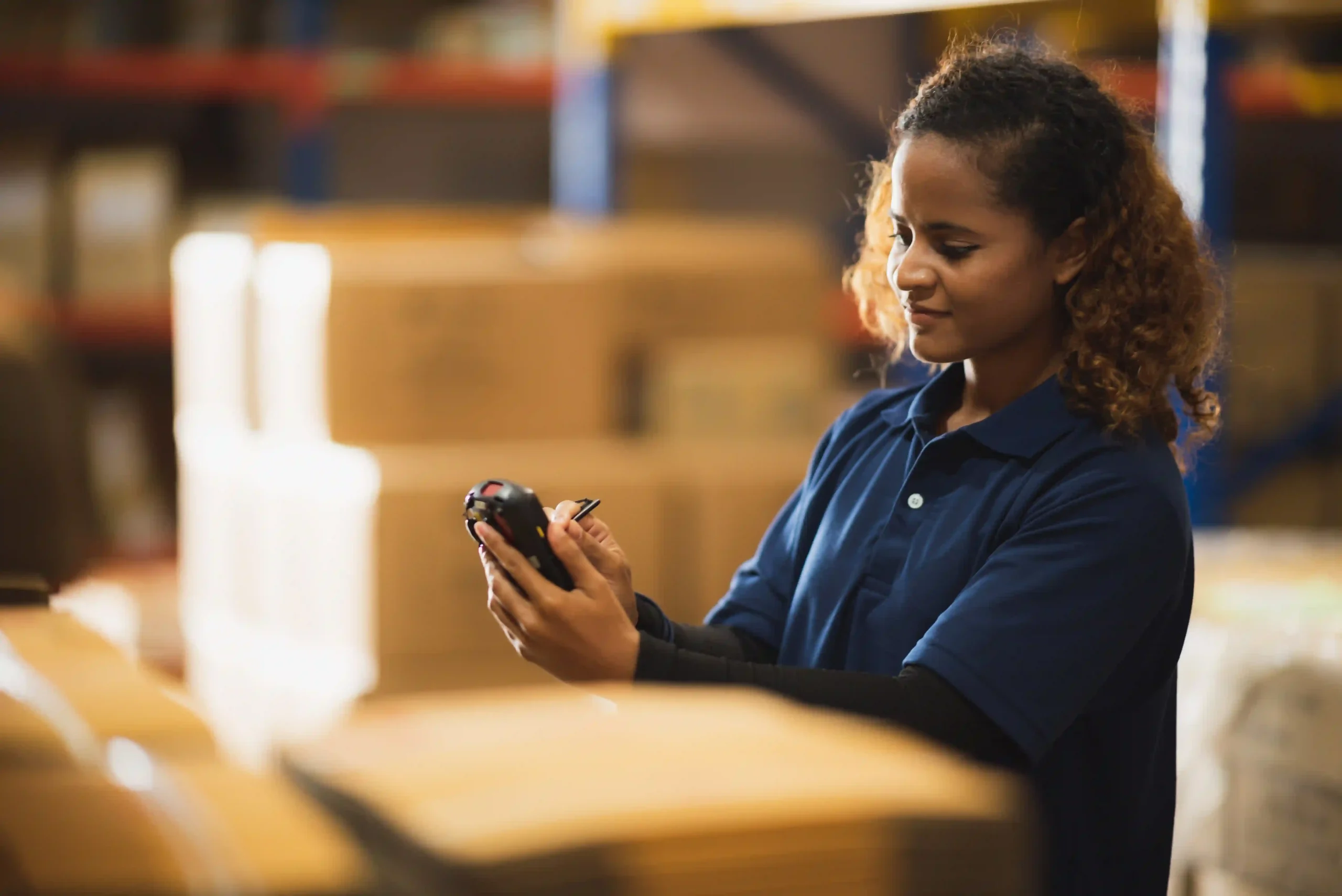An order fulfillment app is a digital tool that helps businesses manage, track, and optimize the steps between a customer placing an order and the product landing on their doorstep. These apps connect your inventory, warehousing, shipping, and order tracking into one centralized system.
Instead of juggling spreadsheets or relying on fragmented platforms, an order fulfillment app keeps everything moving smoothly—and automatically. Whether it’s syncing with your eCommerce store, generating shipping labels, or alerting your customer their package is on the way, this technology turns chaos into calm.

Back when I started Tri-Link FTZ over 35 years ago, everything in logistics felt manual. And it was.
Pallets were tracked with clipboards, order volumes were updated by phone, and “real-time updates” meant asking someone to walk over and check the dock. As our business grew, so did our volume—and the cracks began to show.
We realized we couldn’t scale effectively or compete at the level we needed without serious tech support. That’s when we began experimenting with early fulfillment software. It was clunky at first, but it paved the way.
Today, the order fulfillment app landscape is entirely different—and far more powerful. In our operations now, the app is the nervous system of the warehouse.
Orders come in from multiple sales channels—Amazon, Shopify, direct wholesale—and the fulfillment app routes, prioritizes, and executes them faster than we could’ve imagined years ago. It’s become such an integral part of our day-to-day, I honestly can’t picture running a modern fulfillment center without it. Read more here.
A lot of companies get sold on fancy dashboards and promises of AI automation. But what you really want in an order fulfillment app is simple: control, speed, and visibility.
A good app should give you real-time data on every order, every item, and every truck leaving your dock. At Tri-Link FTZ, we work with clients who move thousands of SKUs monthly.
The wrong app—or worse, no app—can bottleneck an entire supply chain in a single afternoon. Here’s where a solid order fulfillment app makes the difference:
I always tell business owners: if you’re spending more than 15 minutes a day tracking down orders or answering “where is it?” emails, your app isn’t doing its job.
We’ve helped startups shipping 50 orders a week grow into enterprise-level clients moving 50,000 units a month. Every time, the turning point wasn’t just better staffing or more space—it was adopting the right fulfillment tech.
The beauty of a strong order fulfillment app is that it grows with you. Whether you’re doing your own pick-and-pack or working with a 3PL like us, the right tech removes guesswork from your supply chain.
For example, we had a client who sold health products through Shopify, Amazon, and their own DTC site. They were using three different systems to manage orders and fulfillment.
Mistakes were common. Inventory would be available on Amazon but out of stock on their own site, or vice versa. When we moved them to a unified fulfillment app that linked all platforms, their shipping accuracy jumped from 87% to 99.8% in the first 30 days.
The app didn’t just save them time—it saved their reputation. And in logistics, reputation is everything.

Here’s the part most blogs gloss over—what goes wrong. And believe me, I’ve seen it all.
Businesses will often grab the first flashy app they see, or pick something based on a recommendation that worked for a totally different business model. That’s risky.
Here’s what to avoid:
I always say, don’t just choose based on price. Choose based on how much lost time and lost revenue the app will prevent.
There’s no one-size-fits-all. What works for a drop shipper won’t cut it for a subscription box brand or a global B2B operation.
But there are a few questions I always ask when vetting an order fulfillment app for our clients:
Once you have those answers, then you can look at the UI, pricing tiers, and support resources. At Tri-Link FTZ, we’ve worked closely with platforms like ShipStation, Fulfillrite, and Extensiv (formerly Skubana).
They each serve different tiers of business. For a Shopify seller doing under 1,000 orders a month, apps like ShipBob or ShipHero might do the trick.
If you’re hitting enterprise volumes, you’ll want something that handles automation rules, carrier rate shopping, warehouse routing, and SKU-level analytics.
Here’s a quick breakdown:
App Name | Best For | Key Features |
ShipStation | Small to mid-size eCommerce | Multichannel, labels, rate comparison |
Fulfillrite | Crowdfunding & startups | Shopify integration, real-time inventory |
Extensiv | High-volume enterprises | Omnichannel, automation, warehouse syncing |
ShipHero | Growing Shopify brands | Returns automation, order routing |
One of our biggest success stories came from a client who was drowning in fulfillment chaos during a Kickstarter campaign. They had no idea how fast orders would scale, and suddenly they were staring down 5,000 units to ship in under two weeks.
At first, they tried manually fulfilling orders, but that didn’t last long. Missed shipments, wrong items, and endless customer support emails piled up.
We jumped in, moved them into our warehouse, and onboarded them to an order fulfillment app that integrated directly with their crowdfunding backend. From there, everything changed.
Our team could batch print pick lists and labels, automatically send shipping updates, and even reroute international orders through our FTZ to delay or avoid duties. The client’s headaches disappeared overnight, and their campaign ended with a 98.7% fulfillment accuracy rating and raving fans who got their products on time.
These are the stories I love most because they prove what’s possible when good logistics meets smart tech. A well-chosen app isn’t just a backend system—it’s part of your customer experience. Read more here.

At Tri-Link FTZ, we operate at the intersection of third-party logistics and foreign trade zone strategy, which gives us unique visibility into how products move—both physically and digitally. Our fulfillment teams aren’t just stacking pallets or scanning barcodes.
We’re leveraging smart data from our order fulfillment apps every minute of the day. When an order hits our system, the app immediately decides which warehouse it should ship from based on stock levels, customer location, and delivery timelines.
That one choice—automated in milliseconds—can save our clients thousands a month in reduced shipping costs. From there, the app routes pick lists to handheld scanners, updates the customer portal, and syncs inventory across Shopify, Amazon, and even ERP systems.
What’s more, we pair our order fulfillment app with our FTZ benefits. That means our clients can delay duties, avoid tariffs on re-exported goods, and get access to bonded storage—all while automating their fulfillment.
It’s something we’ve fine-tuned over decades of experience, and it’s become one of the reasons clients trust us with sensitive, high-value, and international inventory.
Here’s what you won’t read on your average app comparison blog: the human element of fulfillment apps. You could have the most powerful tool in the world, but if your team doesn’t understand how to use it—or if the app doesn’t fit your workflow—you’ll end up wasting time and money.
Implementation is everything. That’s why we work closely with our clients during the onboarding process.
We don’t just install the app and walk away. We test order flows, train staff, run stress simulations, and build custom dashboards that make sense for the business.
Some clients need reports on SKU velocity; others want to see return rates by channel. A good order fulfillment app allows for that kind of customization, but it only shines when paired with thoughtful strategy.
There’s also a misconception that these apps are only for big businesses. In truth, startups often benefit the most.
When you’re lean on staff and big on hustle, automation isn’t a luxury—it’s survival. And as your orders grow, that early investment in tech pays off tenfold.
We’re entering an age where logistics is as much about software as it is about warehouses. The best order fulfillment app five years from now will likely include predictive AI for stockouts, customer behavior modeling, and dynamic shipping decisions that update in real-time based on weather, traffic, and carrier capacity.
We’re already seeing traces of this with platforms experimenting with machine learning for warehouse optimization. At Tri-Link FTZ, we’re not just watching these trends—we’re part of them.
Our clients rely on us not just for space and shipping, but for forward-thinking strategy. As the industry continues to digitize, we’ll continue to test, adopt, and integrate the latest tools to give our clients a competitive edge.
Whether it’s robotics, IoT sensors, or blockchain-based inventory authentication, we believe the fulfillment app will be the central nervous system that ties it all together. If you’re still managing orders manually—or struggling with outdated systems—now’s the time to change.
Your customers expect fast, accurate, and transparent fulfillment. And the only way to deliver that consistently is with the right technology at your core.
If you’re looking for a partner who understands both the technology and the logistics, we’re here to help. At Tri-Link FTZ, we combine decades of experience with cutting-edge tools to deliver a fulfillment strategy that works at every level of scale.
Whether you’re shipping 10 or 10,000 orders a week, our team—and our tech—are built to support your growth. Visit our About Us page to learn more about our services, our leadership, and why 35 years in logistics has only sharpened our edge.
Or better yet, reach out for a conversation. We’ll help you choose the right order fulfillment app, get your backend in order, and prepare your business for a smarter, faster future.
Share this article
We have other resources available upon request as well as one-on-one support and personalized answers, just like our services.
Simply contact us anytime and we’ll get back to you to answer your questions and provide meaningful answers that show you how Tri-Link supports your logistics, reduces costs, and accelerates efficiency.
Tri-Link delivers exceptional FTZ and 3PL services tailored to your global trade needs.
Our solutions combine innovation, quality, and efficiency to exceed your expectations and meet your specific requirements.
Tariff & Duty Notice: The duty-deferral and tariff information on this page may be outdated due to frequent changes in trade law. Please verify all details with a secondary source—such as official government publications or qualified counsel—before making any business decisions.